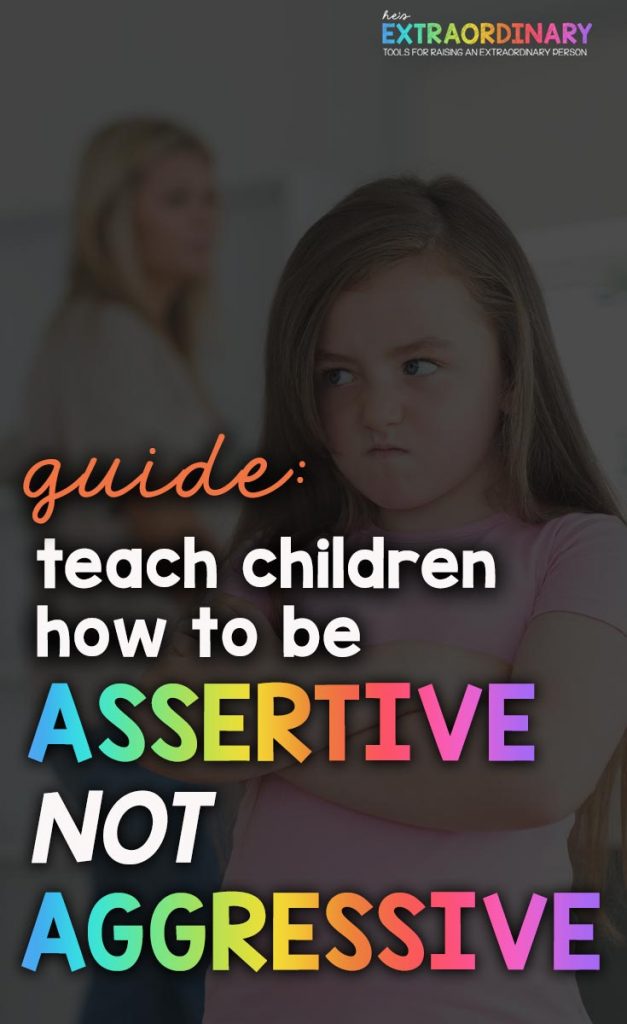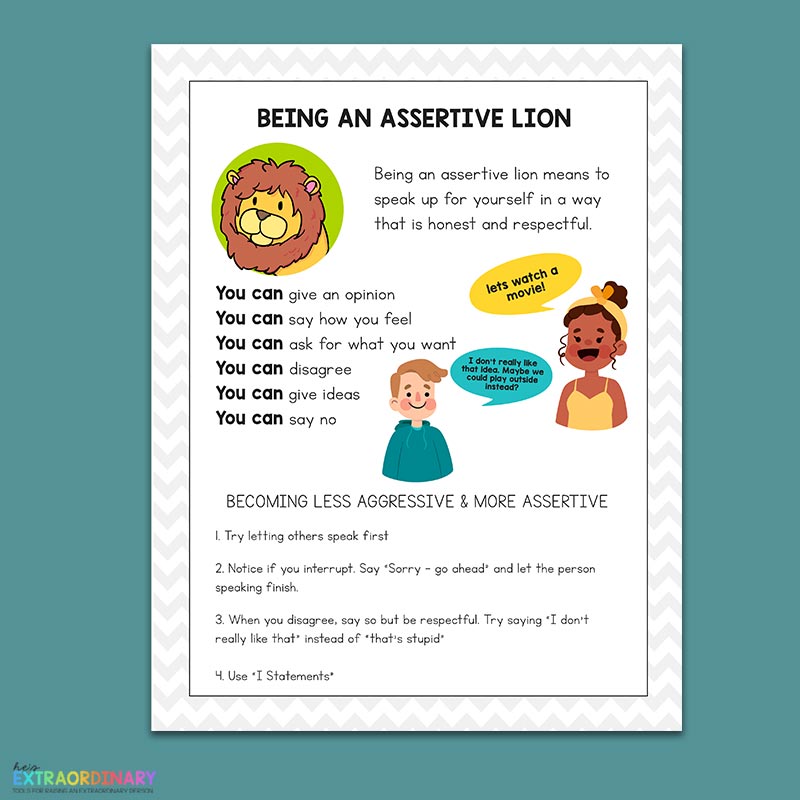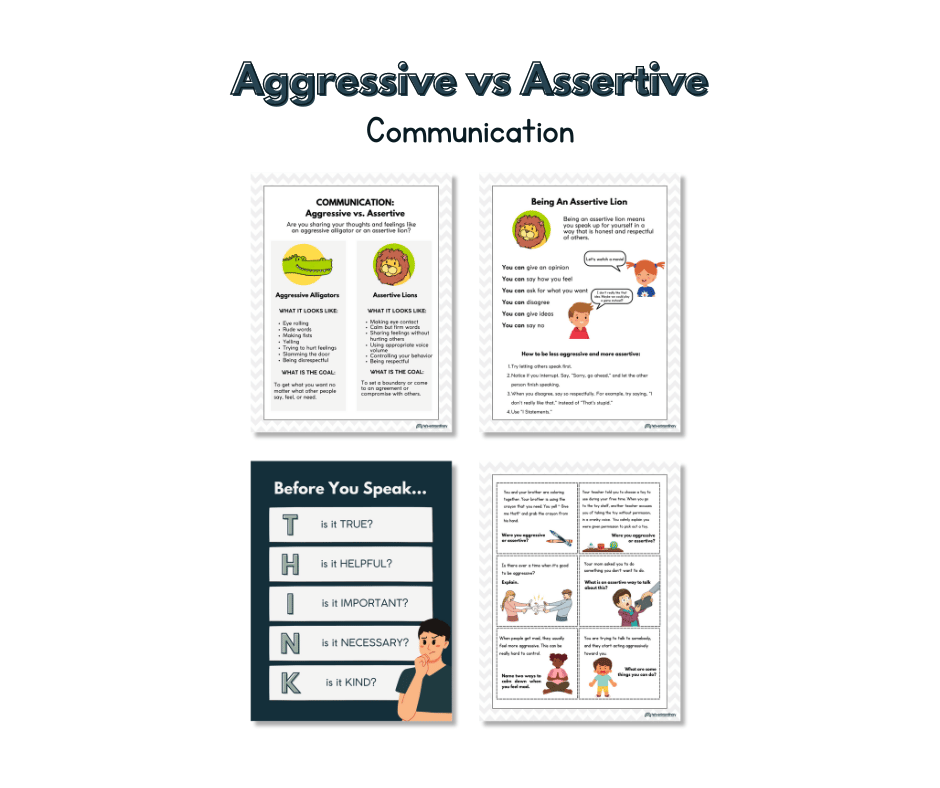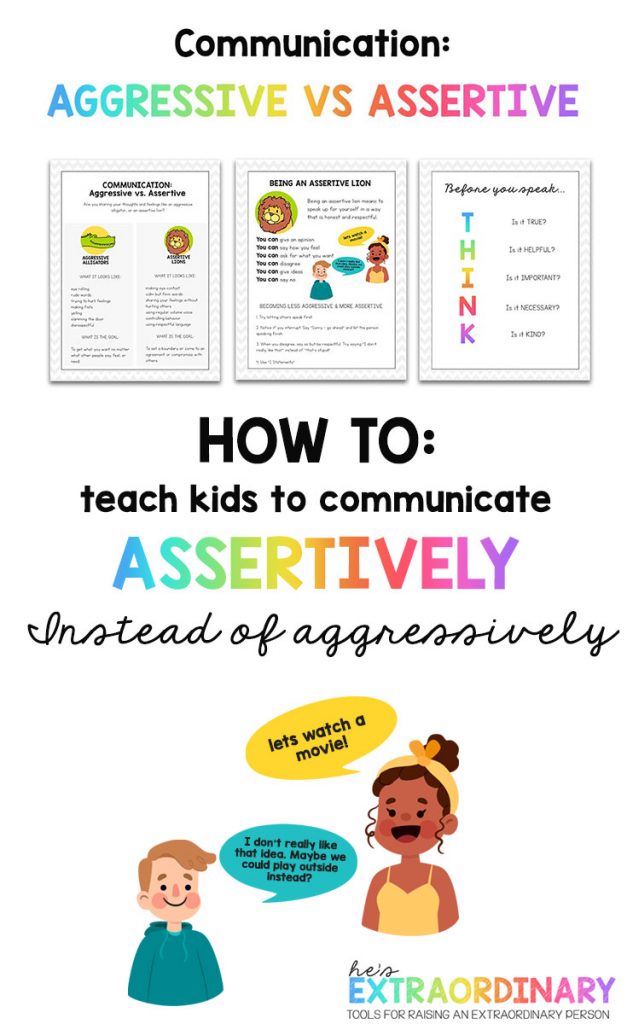Guide: Teaching Kids Assertive vs Aggressive Communication
What’s inside this article: Tips for teaching children how to communicate assertively rather than aggressively. Explain the key differences between these communication styles and include a printable activity for kids.
We spend about 30 minutes each day doing activities that help the family develop social-emotional skills – the focus this week is communicating assertively, not aggressively.
If your child struggles with this skill and tends to use aggressive communication when they don’t get their way, follow along and download the printables at the end of the post.
How to Teach Kids to Communicate Assertively, Instead of Aggressively
There is a third communication style that I left out – passive communication.
That’s just not our focus at this particular time.
We are working a lot on anger management skills, and we’re teaching appropriate communication for those tough moments.
Assertive vs Aggressive
Both assertive and aggressive communication are used to try to influence the behavior of another person – however, the way that influence is achieved is very different.
Aggressive Communication
So for kids, this is going to look like:
Assertive Communication
Being assertive, on the other hand, involves:
What Happens When We’re Aggressive?
This goes both ways.
As a parent – if you lose your temper and resort to aggressive behavior, you’re going to see the same type of outcomes.
When you talk aggressively, you:
This can be a challenging skill to learn – especially for young children who struggle to cope with their emotions.
Using this guide should be a small part of a bigger effort to teach children about social-emotional skills and emotional intelligence.

Introduce the Concepts with Books
We use Julia Cook books as often as possible because they’re a great tool for teaching social-emotional skills.
She does read her books aloud on her YouTube channel, so you can show these to your kids. I’ve included my favorites below.
It’s My Way or The Highway
We read this book first, which Julia Cook actually wrote about her own granddaughter.
Although the book talks a lot about being flexible, the overall message in the book is that things won’t always go the way you want them and you need to respect and follow instructions from the grown-ups who are in charge.
This is a good read if you have a child who has outbursts when they don’t get their way.
The Great Compromise
This one is also about her granddaughter, Cora June, and a classmate.
The book is all about – you guessed it – compromising.
This is important because in order to communicate assertively, you have to be willing to listen to the other person’s point of view and be willing to compromise or agree on something even if it’s not exactly how you wanted it to go.
The Aggressive Alligator and Assertive Lion
I created these printables about the aggressive alligator and the assertive lion as another teaching tool.
These concepts can be difficult for children to understand. By associating them with animals, it can help younger children build a connection more easily.

The first page (above) explains what it looks like to be an alligator and what it looks like to be a lion.
First, read this over with your kids.
Ask them if they can think about the last time they didn’t get their way. Maybe it was a dinner they didn’t want to eat or chores they didn’t want to finish, or a fight with a sibling about using a toy.
Ask “Do you think you reacted like an alligator or a lion?”
How to be an Assertive Lion

The second page of the printable is all about how to be an assertive lion.
You can’t just tell kids what to do and what not to do – they need to know how to do it too.
This page talks about all the things you can do as an assertive lion:
It lists four specific things you can do to become more assertive:
*Note: There are I statement worksheets included in the “Feeling Mad & Feeling Sad” booklet, which is better for younger children, and in the “Expressing Anger” booklet, which is more in-depth and suitable for older children.
THINK Poster
The THINK poster may be one you’ve seen before – I’ve seen hundreds of versions of this poster and actually had a different one hanging up in our calm-down corner when I made these sheets. I’m not sure who originally created it.
I changed the “I” in “Think” from “inspiring” to “important” because I think it better fits this lesson.

We reviewed the poster and discussed how it helps to think about each of those points when you share an opinion or disagree.
Practicing this type of communication will mean that over time it gets easier and more natural and then kids won’t need to think about it so much.
Critical Thinking Cards
The last page of the printable package has 6 cards with questions on them to encourage critical thinking and discuss assertive communication in more detail.
Some of these are challenging and my 9-year-old did find it difficult to answer a few of them so depending on your child’s age, you may want to just explain them to your child rather than expecting them to answer.
Download the Assertive vs Aggressive Printables
You can grab your own copy of them to print and use.

Assertive Vs Aggressive Communication Skills
This four-page printable can be used as a tool for teaching children to communicate assertively, rather than aggressively.
Tips for Teaching This Skill
There are some tips that will help you teach assertive communication successfully.




